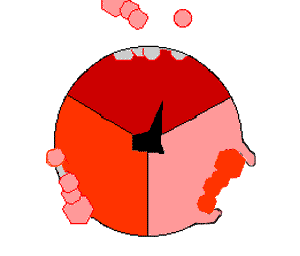DI has just released a video on the ATP Synthase in action (HT: ENV):
The blurb at Youtube reads:
ATP Synthase is a molecular machine found in all living organisms. It serves as a miniature power-generator, producing an energy-carrying molecule, adenosine triphosphate, or ATP. The ATP synthase machine has many parts we recognize from human-designed technology, including a rotor, a stator, a camshaft or driveshaft, and other basic components of a rotary engine. This machine is just the final step in a long and complex metabolic pathway involving numerous enzymes and other molecules—all so the cell can produce ATP to power biochemical reactions, and provide energy for other molecular machines in the cell.
{Added, courtesy commenters below, here is another useful animation:}
https://www.youtube.com/watch?v=H7P4xOUPYVw
Wiki’s somewhat more schematic GIF animation, will help us see what is going on in each cycle of rotation, a little more closely:
Here, we have an enzyme made of a protein complex of subunits, constituting a rotary machine in the mitochondria of the living cell
. . . and responsible for providing the molecular energy batteries without which life would collapse. And, it is recognisably a motor with a working head on its shaft.
What is the empirically grounded explanation for motors, again?
And, the spontaneous, chance and necessity model for its origin is ________, based on _______ as observational evidence?
Any takers? END

